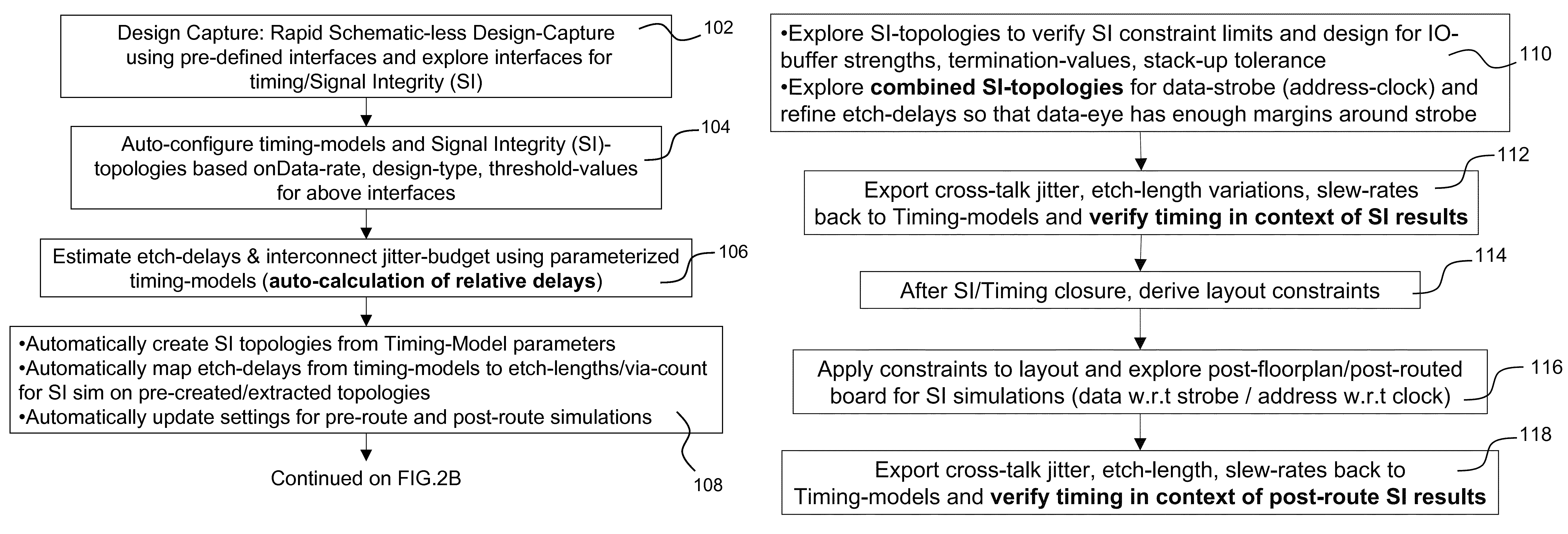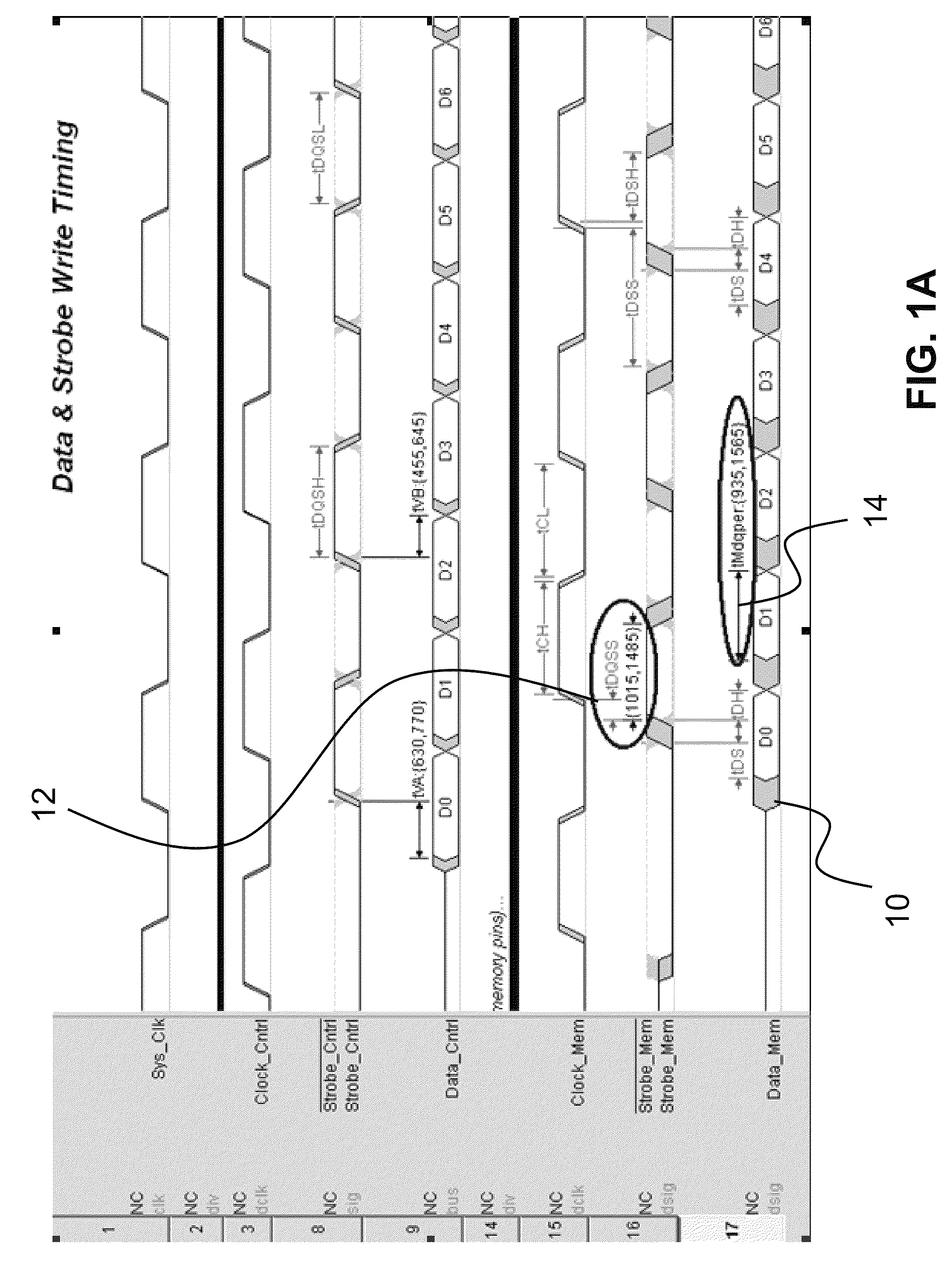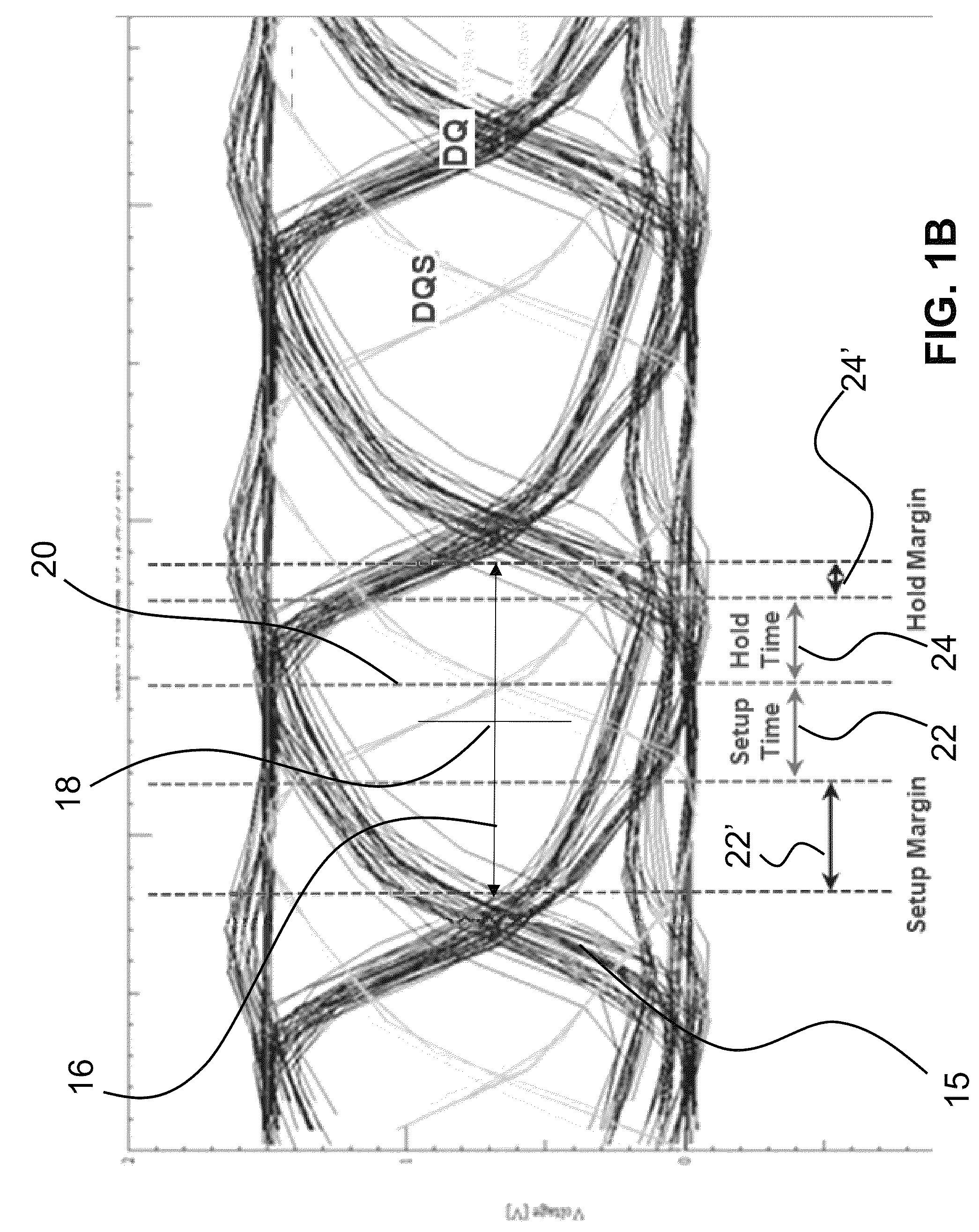System and method for parametric intercoupling of static and dynamic analyses for synergistic integration in electronic design automation
a technology of parametric intercoupling and electronic design, applied in the field of system and method for parametric intercoupling of static and dynamic analyses for synergistic integration of electronic design automation, can solve the problems of inefficiency of design flow, no provision for optimizing the electronic design at hand, and no automatic coordination of respective analysis tools. , to achieve the effect of promoting design flexibility and saving tim
- Summary
- Abstract
- Description
- Claims
- Application Information
AI Technical Summary
Benefits of technology
Problems solved by technology
Method used
Image
Examples
Embodiment Construction
[0041]Signals within a system may generally be modeled as a voltage waveform transmitted from some driver portion of an electronic system to some receiver portion. In a digital application, the signal is normally defined by a stream of binary voltage values passed between the driver and receiver portions, which may be represented in simulated environments by corresponding behavioral models (such as IO buffer models). Signal integrity (SI) analysis is conducted using transient simulation on a corresponding SI topology (an effective circuit based on such behavioral models) between the driver and receiver portions, with suitable stimulus signals.
[0042]Simulation-based analyses, such as Signal Integrity (SI) analyses, are ways to establish the baseline performance of electronic system designs before expending valuable resources in prototyping the same. These analyses are carried out using suitable simulation and analysis tools. In the case of SI analysis, the analysis is carried out usi...
PUM
 Login to View More
Login to View More Abstract
Description
Claims
Application Information
 Login to View More
Login to View More - R&D
- Intellectual Property
- Life Sciences
- Materials
- Tech Scout
- Unparalleled Data Quality
- Higher Quality Content
- 60% Fewer Hallucinations
Browse by: Latest US Patents, China's latest patents, Technical Efficacy Thesaurus, Application Domain, Technology Topic, Popular Technical Reports.
© 2025 PatSnap. All rights reserved.Legal|Privacy policy|Modern Slavery Act Transparency Statement|Sitemap|About US| Contact US: help@patsnap.com



